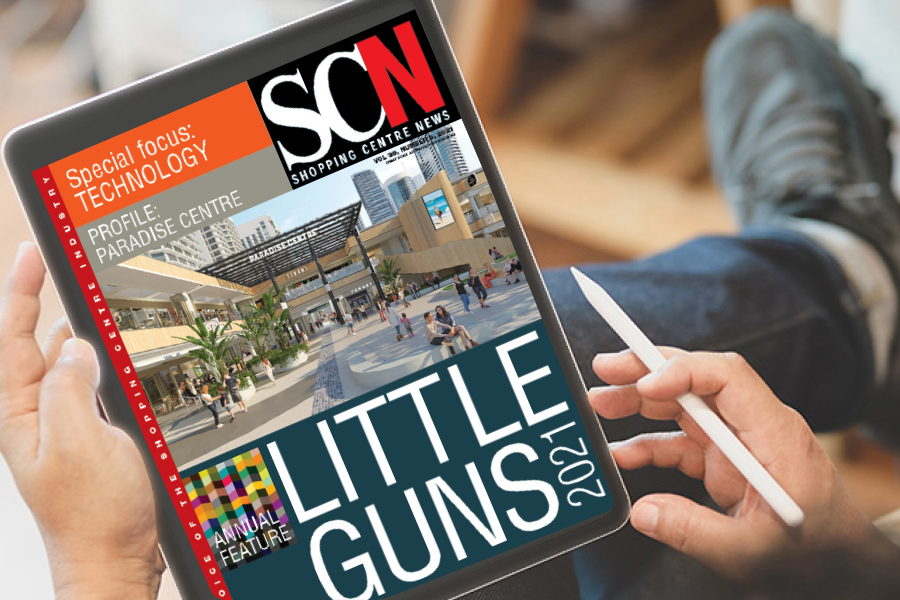It’s Big Guns time again – how the time flies!
Last year was a tough one for retail. It’s not just the e-commerce competition, high levels of debt and low wage-growth that are the problems; consumer patterns are changing. Nothing is static in our business. We have switched emphasis in spending; from Fashion to Food and Beverage. Other factors include an increased level of spending on organic fresh food, rather than mass produced cheaper produce. There’s a flight to quality… the list goes on. But what is really challenging is not simply ‘change’, but the ‘speed of change’.
In the past, there was always change (in our industry); but when change came, what it produced, lasted for between five to ten years, until it changed again. Today, change occurs, the new becomes the norm; but within a year there’s another change!
Recently, I was asked to conduct a session for a group of young leasing people – leasing executives, retail delivery project managers, ‘future centre managers’ and so on. I was really impressed by their enthusiasm for the industry, their commitment to producing shopping centres that were socially responsible and their resolve to produce tenant mixes that catered to surrounding market demand. But I couldn’t help thinking that they were operating with their hands somewhat tied!
Today, more than ever, there is a need for ‘Creative Leasing’. Let me give you an example. I live in an inner-city suburb. About two weeks ago, four young (I’d guess between 25 and early 30s) people, two men and two women, turned up at a vacant shop on the main retail strip. There are several vacancies on the strip; this would be the last pick – a small, maybe 50m2 shop in a poor state of repair and not the best location.
Each day at around 6:30pm, they turn up and start to work in the shop – plastering, painting, laying floors, installing lights. They leave around 9:30pm. I walked past and asked them casually what the story was. They’ve leased the shop, will open in around two weeks and will sell ‘sustainable fashion’, all made in Australia.
I’d bet a lot of money that these people will be successful. They have fun, they laugh and joke a lot; but they work hard and obviously have day jobs. They’re young, enthusiastic, keen, ambitious, smart. When they start trading, they will attract a good clientele; I could be wrong, but suppose I’m right. Suppose these young people are successful; could they become shopping centre tenants? Suppose a Leasing Executive walked past their shop, was impressed and approached them; could they end up taking a lease in a major shopping centre?
In all probability, the answer is in the negative. For a start, they’d be frightened by the rent. The risk of committing to a 3-year lease would be daunting. As well there’d be a ‘bond’, a ‘rental guarantee’ (personal). Then they’d need a bank guarantee in all probability. These are people who probably have a few thousand between them; hard earned cash and who are ‘having a go’.
Suppose they were offered a 3-year lease but they could quit after six months if it didn’t work out. Suppose that the base rent was extremely low but a ‘percentage rent’ of say 15% (total occupancy costs) was offered. Suppose some contribution to fit-out cost, not much, say $10,000 was offered, and let’s go further, suppose they were allowed (within reason) to do their own fit-out and the ‘controls’ were relaxed somewhat. Now the question is asked again; would they take a lease in a major shopping centre?
I know that seems ‘romantic’; dream-time stuff. I am aware we have ‘owners’, ‘portfolio managers’, trust managers and half a dozen layers of ‘control’. But we live in ‘rapidly changing times’, and we, as an industry cannot simply stand still; we need to change as well. All these controls on leasing are a prime example of the tail wagging the dog.
There are people out there, who, in the next 10-15 years, will make a fortune out of retail. These people will develop new retail chains, will sell new stuff, will get into retail arenas that haven’t yet been born. These people will take retail into new forms – in Food, Fashion, Accessories, Technology, Services… the list goes on. And where are they now? Can we see their prototype outlets?
No, we can’t because they’re still in high-school and haven’t decided yet what they’re going to do after completing Year 12. But whatever they do, it will be fast and they’ll change the retail landscape rapidly. We need to change to accommodate them in our centres; we need to take an active role. It doesn’t mean our whole structure needs to change, I’m not advocating we kick the table over and start again. Perhaps we just take a ‘component’ of our centres, even as few as say 15 shops, and have some different rules or controls for them. Nurturing new talent has to become one of our major leasing focuses. Michael Lloyd, SCN





















